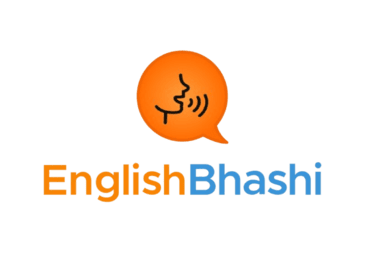Writing a news report is an essential skill for any journalist, blogger, or content creator who wants to convey information clearly, accurately, and engagingly. Whether you’re reporting on current events, breaking news, or just a local story, mastering the art of writing a news report will allow you to communicate effectively with your audience.
In this comprehensive guide, we’ll break down the process of writing a news report, provide helpful examples, and include worksheets and FAQs to guide you through every stage of creating an effective news report.
Table of Contents:
- What is a News Report?
- Key Elements of a News Report
- The 5 W’s and H of News Writing
- Structure of a News Report
- The Lead
- The Body
- The Conclusion
- Tips for Writing an Effective News Report
- Common Mistakes to Avoid
- Examples of News Reports
- News Report Worksheet
- Frequently Asked Questions
1. What is a News Report?
A news report is a written or broadcast article designed to inform the audience about current events, developments, or issues that are of public interest. It is an essential form of journalism, aiming to convey facts and events without bias, often answering the basic questions of who, what, where, when, why, and how. Unlike opinion pieces or editorials, news reports avoid personal judgments and aim for objectivity, allowing the audience to form their own conclusions based on the information provided.
News reports can be found in newspapers, online platforms, broadcast news programs, and other media outlets. Their primary purpose is to keep the public informed about happenings in their community, nation, or world. The scope of news reports can vary from a local school event to breaking global news.
A news report typically:
- Offers a factual, straightforward account of events.
- Presents information in a structured, logical order, often prioritizing the most important facts.
- Aims for clarity and simplicity, making the content easy for a broad audience to understand.
For example, if a natural disaster like a hurricane occurs, a news report might focus on the event’s impact, emergency response efforts, fatalities, and predictions. The report would emphasize the facts—how many people were affected, where it occurred, what measures were being taken, and the anticipated consequences—without delving into opinions about the government’s response or the personal stories of the victims.
2. Key Elements of a News Report
A successful news report contains several essential components that work together to deliver the story to the audience in a clear, engaging, and informative manner. Here are the key elements of a news report:
Headline
The headline is the first thing a reader sees and is often the deciding factor in whether they choose to read the article. The headline serves as a summary of the story, capturing the most important aspects of the event while being concise and attention-grabbing.
A good headline:
- Should be clear and straightforward, reflecting the central theme of the report.
- Often uses active verbs and vivid language to make it engaging.
- Should be brief, typically no longer than 10-15 words.
- Must accurately represent the content of the article.
Example: “Massive Wildfire Threatens California Communities”
This headline is direct, to the point, and provides a clear sense of the urgency involved in the event.
Lead (Lede)
The lead is the opening paragraph of the report and is arguably the most important part of a news article. It provides the essential information in a brief yet comprehensive manner, addressing the 5 W’s and H. The lead should immediately draw in the reader and provide a snapshot of the entire story.
A strong lead:
- Answers the most critical aspects of the event: who, what, when, where, why, and how.
- Sets the tone for the rest of the article.
- Is succinct—usually 1-2 sentences.
Example:
“A wildfire in Northern California has forced over 10,000 residents to evacuate as firefighters battle the blaze in dry, gusty conditions. Authorities warn the fire could grow larger over the next 48 hours.”
This lead encapsulates the most important facts—the location, the scale of the impact, and the urgency of the situation.
Body
The body of the news report expands upon the information provided in the lead. It answers any remaining questions and provides further context, quotes from sources, and additional details. This section follows the inverted pyramid style, meaning the most critical information comes first, followed by less essential details.
The body should include:
- Supporting details: Facts, statistics, and background information that help explain the main event.
- Quotes: Statements from people involved in or affected by the event. These can include officials, witnesses, or experts, adding credibility and human interest to the story.
- Context: Any historical or situational background that helps the reader understand the broader significance of the event.
Example:
The body might expand on the above lead by including information on the cause of the fire, the number of people affected, local emergency response efforts, and how residents are coping. Including a quote from a firefighter or local resident would also be appropriate.
Conclusion
The conclusion provides a wrap-up to the report, which can include a summary of the event’s current status or implications for the future. It might also offer a prediction or look at what’s to come, such as a future update or continued coverage.
A good conclusion:
- Summarizes any final details.
- May mention a follow-up or future developments.
- Closes the article with a final thought, often tying the event to its broader impact.
Example:
“Authorities are working around the clock to contain the fire, with hopes of bringing it under control in the next 24 hours. Evacuees have been provided with shelter and supplies, while a local relief fund is being set up to assist those affected.”
3. The 5 W’s and H of News Writing
The 5 W’s and H are critical to effective news writing because they ensure that the report covers all the essential aspects of a story. These six questions guide the reporter in gathering relevant information and organizing it in a way that is informative and complete. Let’s break them down:
Who
The “who” refers to the individuals or groups involved in the story. This includes:
- Key figures like government officials, celebrities, or community leaders.
- Ordinary people impacted by the event, such as victims, bystanders, or witnesses.
- Organizations or institutions tied to the event, like companies, NGOs, or agencies.
In news writing, identifying who is involved helps personalize the story and connect the event to real people.
Example: “Local authorities and community leaders gathered to discuss the new park project.”
What
The “what” answers the question of what happened. It defines the main event or subject of the story. The what is the action or key event that will be the focus of the article.
Example: “A new public park was inaugurated in the city center.”
Where
The “where” provides the location of the event. In news reporting, the where is crucial because the audience wants to know where the event took place, whether it’s in their local community or elsewhere in the world.
Example: “The park was built on the old industrial site near Main Street.”
When
The “when” tells readers when the event occurred. Time is essential because it gives context to the story. Providing the exact date or time frame (like “this morning” or “over the past week”) makes the report more relevant.
Example: “The park was officially opened on Sunday, October 22, 2024.”
Why
The “why” explores the reason behind the event. It explains why something happened, often delving into the motivations, causes, or circumstances leading to the story. The why helps readers understand the significance of the event and its implications.
Example: “The new park was built to provide more green space and improve the quality of life in the downtown area.”
How
The “how” explains the process behind the event, answering questions such as: How did it happen? What steps led to this point? What actions or measures were taken to achieve the outcome?
Example: “The park was developed through a partnership between the city government and local businesses, with construction taking over two years.”

4. Structure of a News Report
News reports generally follow a specific structure. A good report is organized in a way that draws readers in with the most essential information upfront and then provides additional context and details.
The Lead:
The lead (or lede) is the opening paragraph of your report. It should grab the reader’s attention and summarize the most critical details of the story. A well-crafted lead should answer at least the 5 W’s and H, in a concise manner.
Example Lead:
“Springfield’s new public park officially opened its gates on Sunday, offering downtown residents a much-needed green space. The park, located on Main Street, was created through a collaboration between local government and private investors, marking a significant step in the city’s revitalization efforts.”
The Body:
The body of your report contains the bulk of the information. After the lead, you should provide supporting details, quotes, and context. Use the inverted pyramid style, where the most important information comes first, followed by less important but still relevant facts.
Body Example:
The park, which spans 10 acres, features walking trails, playgrounds, and sports courts. “This park is going to be a fantastic addition to our community,” said Mayor Lisa Green at the ribbon-cutting ceremony. “It’s a safe space for families, children, and the elderly, and it will help revitalize this part of the city.”
The project was a joint venture between Springfield City Council and local businesses. The city allocated $2 million in funding, while private donors contributed $500,000 for additional amenities like picnic areas and a community garden.
The Conclusion:
Your conclusion should wrap up the report and may provide a look at what’s next. It could be future implications of the event, a follow-up story, or the expected outcomes.
Example Conclusion:
As for the future, the city plans to host weekly community events at the park, including free fitness classes and outdoor movie nights. Local officials hope the park will become a gathering place for families and a model for future urban green spaces.
5. Tips for Writing an Effective News Report
Here are some tips to ensure your news report is compelling and professional:
- Be Clear and Concise: Avoid long-winded sentences. Stick to the essential facts and make every word count.
- Use Objective Language: Your goal is to inform, not to persuade. Avoid bias, opinions, or emotional language.
- Check Facts: Accuracy is crucial in news writing. Always fact-check your information before publishing.
- Use Active Voice: Use active voice whenever possible, as it is more direct and engaging. (e.g., “The mayor opened the park,” instead of “The park was opened by the mayor.”)
- Quote Sources: Always include quotes from key people involved. This adds credibility and humanizes the story.
- Avoid Jargon: Don’t use technical or niche language unless it’s relevant and easily explained to your audience.
- Proofread: Always proofread your report for errors in spelling, grammar, and facts.
6. Common Mistakes to Avoid
Even experienced writers make mistakes. Here are some common pitfalls to avoid when writing news reports:
- Not Including the Most Important Information First: Always prioritize the most crucial facts.
- Being Too Vague: Don’t leave out key details that help answer the 5 W’s and H.
- Writing Too Long or Too Short: News reports should be detailed but concise. Too much detail can overwhelm readers, while too little can leave them with unanswered questions.
- Lacking Objectivity: Avoid including personal opinions or biases in your writing.
- Misquoting Sources: Ensure your quotes are accurate, and always attribute statements properly.
7. Examples of News Reports
Example 1: Local News Report
Headline: “Local School Hosts Annual Charity Fundraiser for the Homeless”
Lead: On Saturday, Springfield High School hosted its annual charity event, raising over $10,000 for local homeless shelters. Students and faculty worked together to organize a day of music, food, and activities.
Body: The event, held in the school gymnasium, featured performances from the school band, a silent auction, and a bake sale. All funds raised will be donated to the Springfield Homeless Shelter, which provides food, clothing, and temporary housing for those in need.
Conclusion: Organizers hope this year’s event will set a new record for charitable contributions and inspire other schools in the area to hold similar fundraisers.
Example 2: National News Report
Headline: “National Tech Conference Announces New Artificial Intelligence Partnerships”
Lead: The National Technology Conference, held in San Francisco this week, unveiled several new partnerships between tech giants and AI startups aimed at advancing artificial intelligence applications in healthcare.
Body: Among the new collaborations, Google will partner with AI startup MedTech to create software that predicts patient diagnoses based on medical history. Meanwhile, Apple announced its commitment to integrating AI-driven health tools into its upcoming iOS update.
Conclusion: The partnerships are expected to revolutionize healthcare, improving both patient outcomes and efficiency across the industry.
8. News Report Worksheet
Step-by-Step Guide:
- Choose Your Topic: Select a current event or topic for your news report.
- Gather Information: Conduct research, interview sources, and verify your facts.
- Write the Lead: Start with a concise summary that answers the 5 W’s and H.
- Write the Body: Expand on the details, including quotes, context, and supporting facts.
- Write the Conclusion: End the report with a brief summary or look ahead.
- Proofread: Check for accuracy, grammar, and clarity.
Worksheet Example:
- Headline: ___________________________
- Lead: ___________________________
- Who: ___________________________
- What: ___________________________
- Where: ___________________________
- When: ___________________________
- Why: ___________________________
- How: ___________________________
- Quotes: ___________________________
- Conclusion: ___________________________
Frequently Asked Questions
What is the difference between a news report and a feature story?
A news report focuses on delivering the facts quickly and objectively, while a feature story delves deeper into a topic, offering more background, analysis, and often a more personal perspective.
How long should a news report be?
The length of a news report varies, but typically it ranges from 300 to 800 words. For breaking news, the report might be shorter, while a more detailed story may be longer.
Should I include personal opinions in a news report?
No, a news report should be objective and free of personal opinions. The focus should be on the facts and the views of the people involved.
What is a good news report headline?
A good headline should be clear, concise, and attention-grabbing. It should summarize the most important aspect of the story in just a few words.
How can I improve my news writing skills?
Practice is key. Write regularly, read professional news reports, and seek feedback from experienced writers or editors. Keep improving your ability to present information in a clear and unbiased manner.


